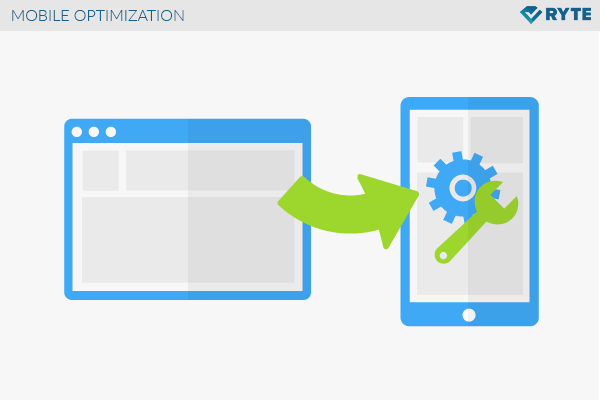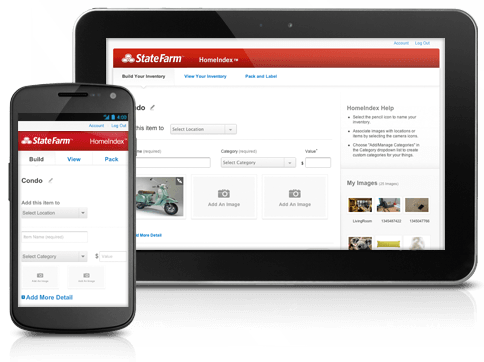Boost Rankings and Interaction through Proven Mobile Optimization Methods
Boost Rankings and Interaction through Proven Mobile Optimization Methods
Blog Article

The Ultimate Guide to Mobile Optimization: Methods for Enhancing Internet Site Performance on Smartphones and Tablets
The approaches for improving internet site efficiency on mobile platforms go past simple adaptation; they include a comprehensive approach that includes responsive layout, speed optimization, content techniques, and customer experience improvements. By diving right into the intricacies of mobile optimization, companies can not just satisfy individual expectations yet also remain in advance in a competitive electronic landscape.
Value of Mobile Optimization
Mobile optimization plays a pivotal function in enhancing customer experience and driving conversion prices in the ever-evolving electronic landscape. With the raising use of smartphones and tablets for searching the net, ensuring that websites are enhanced for smart phones has become imperative for services - Mobile Optimization. A mobile-optimized site not just adapts perfectly to various screen sizes however also loads promptly, giving customers with a smooth and delightful surfing experience
In today's fast-paced world, individuals anticipate instantaneous accessibility to info on the move. A site that is not maximized for smart phones threats shedding potential consumers as a result of reduce filling times or a poor user interface. By buying mobile optimization, services can deal with the needs of their mobile target market, causing higher engagement and boosted conversions.
Additionally, internet search engine like Google prioritize mobile-friendly sites in their rankings, making mobile optimization essential for boosting visibility and drawing in organic website traffic. Mobile Optimization. Overall, the importance of mobile optimization can not be overstated, as it straight impacts customer complete satisfaction, conversion rates, and overall organization success in the digital realm
Responsive Layout Strategies
Applying responsive style strategies guarantees that websites dynamically change their design and material based on the user's device display dimension, offering a regular customer experience across various systems. One of the most typical approaches utilized in responsive design is creating fluid grids that allow web content to resize proportionally to the display size. This makes sure that aspects on the webpage keep their relative spacing and setup, enhancing the checking out experience for users on different tools.
Furthermore, making use of versatile images that can scale with the size of the viewport assists stop images from being chopped or distorted on smaller sized screens. CSS media questions play a crucial role in receptive design by enabling developers to use details designs based on the device attributes such as display size, height, and positioning. By leveraging media questions, websites can adapt their layout and style to suit mobile phones, tablet computers, and desktop screens effortlessly.
Including responsive design techniques not just enhances customer experience however also contributes to improved internet search engine positions, as search engines like Google prioritize mobile-friendly internet sites in their mobile search engine result. By accepting receptive layout, sites can accommodate the diverse demands of customers accessing material on a variety of devices, eventually driving engagement and conversions.
Rate and Performance Optimization

One secret method is enhancing photos and multimedia material to minimize data sizes without jeopardizing quality. Pressing photos, leveraging modern-day image formats like WebP, and careless loading offscreen pictures work methods to quicken tons times (Mobile Optimization). Additionally, decreasing HTTP requests, leveraging web browser caching, and reducing web next page server response times are critical action in enhancing efficiency.
Carrying out a material delivery network (CDN) can additionally dramatically enhance internet site speed by distributing material across several servers globally, lowering latency for individuals accessing the site from various places. Focusing on critical above-the-fold content and deferring non-essential manuscripts can better enhance perceived efficiency. By focusing on speed and efficiency optimization, web sites can provide a seamless and enjoyable customer experience on smart phones.
Mobile-Friendly Content Methods
Mobile-friendly web content approaches entail tailoring the discussion of details to match the smaller sized screens and on-the-go nature of smartphone and tablet customers. Furthermore, breaking up web content into much shorter paragraphs and making use of bullet factors can aid boost readability and make it much easier for users to eat info quickly.
Incorporating interesting visuals, such as images and video clips maximized for mobile watching, can likewise improve the general customer experience. These visuals ought to be relevant, top quality, and tons swiftly to avoid users from wearying. Integrating interactive aspects like tests, surveys, or studies can boost customer engagement and motivate energetic participation.
Customer Experience Enhancements
Building on the foundation of mobile-friendly material strategies, enhancing customer experience entails maximizing every touchpoint to make sure seamless communication and satisfaction for mobile customers. One essential facet of improving customer experience on mobile phones is guaranteeing quickly packing times. Users expect web sites to pack promptly on their smartphones and tablets, and any type of hold-ups can bring about disappointment and enhanced bounce prices. Applying responsive layout is another essential consider boosting user experience. Responsive design guarantees that sites adapt to numerous recommended you read display dimensions and resolutions, providing a consistent and user-friendly experience throughout various check out here tools.
Enhancing forms for mobile users by lessening the number of fields and utilizing auto-fill attributes can additionally boost the overall user experience. By focusing on these customer experience enhancements, internet sites can efficiently involve and preserve mobile visitors.
Final Thought
In conclusion, mobile optimization is crucial for boosting site efficiency on mobile phones and tablet computers. By applying receptive design strategies, enhancing rate and performance, producing mobile-friendly content, and improving user experience, businesses can successfully reach and engage with their mobile audience. It is vital for internet sites to adjust to the enhancing mobile usage trends in order to remain competitive in the electronic landscape.
Report this page